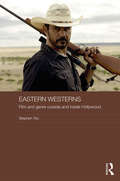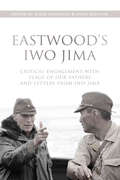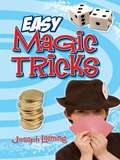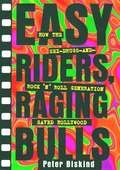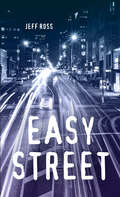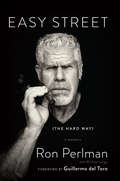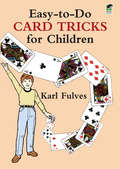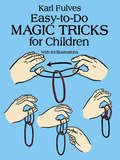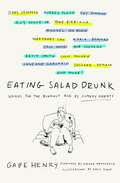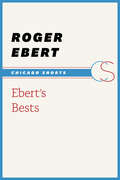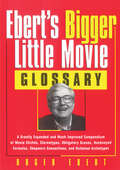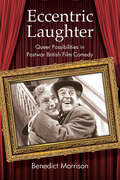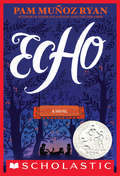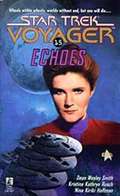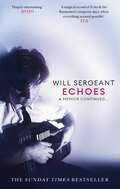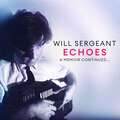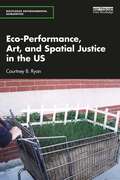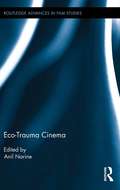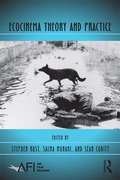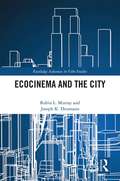- Table View
- List View
Eastern Westerns: Film and Genre Outside and Inside Hollywood (Media, Culture and Social Change in Asia)
by Stephen TeoThe western, one of Hollywood’s great film genres, has, surprisingly, enjoyed a revival recently in Asia and in other parts of the world, whilst at the same time declining in America. Although the western is often seen as an example of American cultural dominance, this book challenges this view. It considers the western from an Asian perspective, exploring why the rise of Asian westerns has come about, and examining how its aesthetics, styles and politics have evolved as a result. It analyses specific Asian Westerns as well as Westerns made elsewhere, including in Australia, Europe, and Hollywood, to demonstrate how these employ Asian philosophical and mythical ideas and value systems. The book concludes that the western is a genre which is truly global, and not one that that is purely intrinsic to America.
Eastwood's Iwo Jima
by Rikke Schubart Anne GjelsvikWith Flags of Our Fathers (2006) and Letters from Iwo Jima (2006), Clint Eastwood made a unique contribution to film history, being the first director to make two films about the same event. Eastwood's films examine the battle over Iwo Jima from two nations' perspectives, in two languages, and embody a passionate view on conflict, enemies, and heroes. Together these works tell the story behind one of history's most famous photographs, Leo Rosenthal's "Raising the Flag on Iwo Jima." In this volume, international scholars in political science and film, literary, and cultural studies undertake multifaceted investigations into how Eastwood's diptych reflects war today. Fifteen essays explore the intersection among war films, American history, and Japanese patriotism. They present global attitudes toward war memories, icons, and heroism while offering new perspectives on cinema, photography, journalism, ethics, propaganda, war strategy, leadership, and the war on terror.
Eastwood's Iwo Jima: Critical Engagements with Flags of Our Fathers and Letters from Iwo Jima
by Rikke Schubart Eds. Gjelsvik AnneWith Flags of Our Fathers (2006) and Letters from Iwo Jima (2006), Clint Eastwood made a unique contribution to film history, being the first director to make two films about the same event. Eastwood's films examine the battle over Iwo Jima from two nations' perspectives, in two languages, and embody a passionate view on conflict, enemies, and heroes. Together these works tell the story behind one of history's most famous photographs, Leo Rosenthal's "Raising the Flag on Iwo Jima." In this volume, international scholars in political science and film, literary, and cultural studies undertake multifaceted investigations into how Eastwood's diptych reflects war today. Fifteen essays explore the intersection among war films, American history, and Japanese patriotism. They present global attitudes toward war memories, icons, and heroism while offering new perspectives on cinema, photography, journalism, ethics, propaganda, war strategy, leadership, and the war on terror.
Easy Magic Tricks (Dover Magic Books)
by Joseph LeemingUsing the simplest props and common household items -- handkerchiefs, string, rope, playing cards, coins, dice, thimbles -- children of all ages will amaze friends and family with these easy-to-learn magic tricks. From classic table stunts and mind-reading acts to dice divinations and more magical merriment, this fully illustrated guide carefully explains each trick step-by-step . . . and will turn amateurs into wizards in no time! Performers will baffle their audiences with:* The Color-Changing Handkerchief* The Dissolving Knots* Dollar Bill Mind Reading* Dice Mathemagic* The Disappearing Thimble* Drinking Glass Levitation* Penny Jumping* The Midas Dinner Rolland many more fun, fascinating illusions.
Easy PE Games for Classroom Teachers: Simple games that get kids active and teach a life lesson
by Joseph AguiarThis book will provide you with 20 simple activities that require little to no equipment. No sports background is required. A safe space and a little time are all you need to plan a great PE lesson that your kids will love. Each lesson comes with a skill focus, simple description, variation, and teaching point. The teaching points are a great way to wrap up the lesson. Developing our students cognitively, emotionally, and physically is the goal of any teacher.
Easy Riders Raging Bulls: How the Sex-Drugs-And Rock 'N Roll Generation Save
by Peter BiskindIn 1969, a low-budget biker movie, Easy Rider, shocked Hollywood with its stunning success. An unabashed celebration of sex, drugs, and rock 'n' roll (onscreen and off), Easy Rider heralded a heady decade in which a rebellious wave of talented young filmmakers invigorated the movie industry. In Easy Riders, Raging Bulls, Peter Biskind takes us on the wild ride that was Hollywood in the '70s, an era that produced such modern classics as The Godfather, Chinatown, Shampoo, Nashville, Taxi Driver, and Jaws.Easy Riders, Raging Bulls vividly chronicles the exuberance and excess of the times: the startling success of Easy Rider and the equally alarming circumstances under which it was made, with drugs, booze, and violent rivalry between costars Dennis Hopper and Peter Fonda dominating the set; how a small production company named BBS became the guiding spirit of the youth rebellion in Hollywood and how, along the way, some of its executives helped smuggle Huey Newton out of the country; how director Hal Ashby was busted for drugs and thrown in jail in Toronto; why Martin Scorsese attended the Academy Awards with an FBI escort when Taxi Driver was nominated; how George Lucas, gripped by anxiety, compulsively cut off his own hair while writing Star Wars, how a modest house on Nicholas Beach occupied by actresses Margot Kidder and Jennifer Salt became the unofficial headquarters for the New Hollywood; how Billy Friedkin tried to humiliate Paramount boss Barry Diller; and how screenwriter/director Paul Schrader played Russian roulette in his hot tub. It was a time when an "anything goes" experimentation prevailed both on the screen and off.After the success of Easy Rider, young film-school graduates suddenly found themselves in demand, and directors such as Francis Coppola, Peter Bogdanovich, George Lucas, and Martin Scorsese became powerful figures. Even the new generation of film stars -- Nicholson, De Niro, Hoffman, Pacino, and Dunaway -- seemed a breed apart from the traditional Hollywood actors. Ironically, the renaissance would come to an end with Jaws and Star Wars, hugely successful films that would create a blockbuster mentality and crush innovation.Based on hundreds of interviews with the directors themselves, producers, stars, agents, writers, studio executives, spouses, and ex-spouses, this is the full, candid story of Hollywood's last golden age. Never before have so many celebrities talked so frankly about one another and about the drugs, sex, and money that made so many of them crash and burn.By turns hilarious and shocking, Easy Riders, Raging Bulls is the ultimate behind-the-scenes account of Hollywood at work and play.
Easy Street (Orca Soundings)
by Jeff RossThree years ago Rob’s brother, Adam, was sent to jail for his part in the death of a girl who overdosed at a rave. But now that he has been released, Rob hopes that things can go back to the way they used to be. He soon realizes this is impossible. His brother has changed, the times have changed, and Rob has changed. Adam tells his mom and brother that he is planning to apply to a college in Toronto. He has already discovered how difficult it can be for someone with a criminal record to land a job and thinks he needs to get some education under his belt. He invites Rob to go on a road trip to the city to check out the college. However, Rob suspects that Adam hasn’t asked him along just for company. Adam still believes that there’s an easy way to get to where he wants to be. And if Rob can’t find a way to save Adam from himself, he just might go down with him.
Easy Street (the Hard Way): A Memoir
by Michael Largo Ron Perlman Foreword by Guillermo del ToroThe candid, hilarious, and inspiring memoir of the iconic star of Beauty and the Beast,the Hellboy movies,and Sons of Anarchy. A classically trained actor who cut his teeth in the East Village’s Off-Broadway scene, Ron Perlman--a Golden Globe winner (Beauty and the Beast) with starring roles in the Hellboymovies, Drive, Pacific Rim, and Sons of Anarchy--has traveled an offbeat path to showbiz success. His story involves rising from New York’s tough Washington Heights neighborhood, enduring incredible hardships, and ignoring the naysayers who taunted him for his distinctive looks. It’s a tale that demonstrates the power of persistence. With a filmography of nearly 200 credits working alongside countless stars during his forty-year career, Perlman knows the ins-and-outs of filmmaking. In Easy Street (the Hard Way), he shares his inspiring story for the next generation of performers.
Easy-to-Do Card Tricks for Children
by Karl FulvesChildren love card tricks, and with this book by an expert in magic and card conjuring, youngsters will be able to master a host of tricks especially designed for them.Tricks are arranged in order of difficulty, with the simplest at the beginning of the book. Clearly written, easy-to-follow instructions and over 60 helpful diagrams take aspiring magicians through each step -- from preparing and manipulating the cards to developing a line of patter (a necessary ingredient for any successful performance).Newcomers to the art of performing card tricks need no special skills -- just a willingness to practice -- to accomplish such astonishing stunts as finding a card under seemingly impossible conditions, causing a card to rise mysteriously from the deck, reading the spectator's mind, and 27 other mind-boggling maneuvers.
Easy-to-Do Magic Tricks for Children
by Karl FulvesClear diagrams and step-by-step instructions for performing 18 simple feats of prestidigitation: Strength Test, Untangled, Elastic Lock, Mystic Spinner, Rollaway, Heavyset, The Great Escape and many more, using such ordinary objects as coins, rubber bands and string.
Eat Like a Luchador: The Official Cookbook
by Legends of Lucha Libre Mónica OchoaFrom the ring to the kitchen, celebrate lucha libre with popular Mexican dishes offering a modern twist from iconic athletes, legends, and superstars in this one-of-a-kind cookbook for wrestling fans and aspiring chefs alike. Lucha libre—or, professional Mexican wrestling—is the most popular sport in Mexico after soccer and has become an international pop culture phenomenon all over the world. This officially licensed cookbook with the Legends of Lucha Libre includes more than 50 favorite Mexican dishes with a modern-day twist from the sport's most celebrated luchadores and luchadoras including Solar, Super Astro, Penta Zero M, Lady Maravilla, and more. Also included are fun stories and facts on championship details and family legacies, dozens of photos of wrestlers in the ring and in the kitchen, and illustrations of delicious food.Written by Mexico's leading female lucha libre journalist, Mónica "Centellita" Ochoa has interviewed some of the most well-known wrestlers in lucha libre, costume designers, and restaurant owners from around the globe to compile this must-have collection of recipes fit for hungry luchadores and their families.Recipes include: Super Astro's six-pound Gladiator TortaTaya Valkyrie's sweet and savory Carne AsadaPenta Zero M's zero fear Chicken Fajitas with Bell PeppersTinieblas Jr.'s twist on Surf and Turf luchador-styleWWE Hall of Famer Amy Dumas's vegan Tlacoyo de Nopaland more!
Eat Like a Maisel: The Unofficial Cookbook for Fans of The Marvelous Mrs. Maisel
by Anthony LeDonneWhat’s more marvelous than watching Miriam Maisel take the New York comedy scene by storm? Eating just like her while doing it! In this fun, unofficial cookbook inspired by The Marvelous Mrs. Maisel, fans of the hit show will love dropping into the Maisels’ kitchen and eating, drinking, and entertaining just like them. Anthony LeDonne explores the culinary world of Manhattan in the 1950s, honoring beloved classics while offering a fresh take with modern ingredients and techniques, which the ever-improving Midge would surely approve of. Fans will love the more than 100 recipes—from classic cocktails and fancy finger foods to mouthwatering mains and decadent desserts—and the creative connections back to the show. Recipes include:Brisket and Latkes for Baz (and the Methodist version, Pot Roast, for the Penny Pann loyalists)Baked Beans (for that young man, Susie)Daiquiris for Imogene (“. . . there aren't enough daiquiris in the world”)Mac & Cheese (for hangover days)Mashed Potatoes for Mordecai Glickman (with no lumps, because every lump is a choking hazard)Eggrolls with (or without?) shrimp With stunning photography, clever integration with the world of comedy, and a nod to eating and drinking in New York City, Eat Like a Maisel is a must-have for your next Maisel viewing party or any day you’re feeling particularly marvelous. Paired with detailed photos, these easy-to-follow recipes are sure to get you a standing ovation.
Eating Salad Drunk: Haikus for the Burnout Age by Comedy Greats
by Gabe Henry“I’m huge on Twitter.”—An ancient proverb that meansLonely in real life.—JOEL KIM BOOSTERJokes and haikus have a common goal: to pack the greatest punch in the most succinct way possible. In Eating Salad Drunk, today's biggest names in comedy come together to do just that, with hilarious, poignant, and (sometimes) dirty haikus about living and coping in our modern "burnout age." Contributors include Jerry Seinfeld, Michael Ian Black, Aubrey Plaza, Margaret Cho, Maria Bamford, Ray Romano, Aparna Nancherla, Ziwe Fumudoh, Chris Gethard, Sasheer Zamata, Colin Mochrie, Zach Woods, and many more! Curated by Gabe Henry, author and manager of the popular Brooklyn comedy venue Littlefield, Eating Salad Drunk's topics include:-Modern Romance-Friends & Family-Screentime-Nature Calls-Food -Entertainment-The Struggle is Real-Words of Wisdom, and-Self Love & LoathingThe book also includes 50 super-relatable black and white drawings by New Yorker cartoonist Emily Flake, as well as a foreword by stand-up comedian and actor Aparna Nancherla (Crashing, BoJack Horseman, Inside Amy Schumer).Eating Salad Drunk is the perfect gift for any fan of humor as an escape from our dystopian present.*All author proceeds go towards Comedy Gives Back, a nonprofit that provides mental health, medical, and crisis support resources for comedians.
Ebert's Bests (Chicago Shorts)
by Roger EbertA treasury of year-by-year ten-best lists, plus personal reminiscences by the man whose name became synonymous with the movies. In Ebert&’s Bests, the iconic Roger Ebert takes us through the journey of how he became a film critic, from his days at a student-run cinema club to his rise as a television commentator in At the Movies and Siskel & Ebert. Recounting the influence of the French New Wave; his friendships with Werner Herzog and Martin Scorsese; and travels to Sweden and Rome to visit Ingrid Bergman and Federico Fellini, Ebert never loses sight of film as a key component of our cultural identity. In considering the ethics of film criticism—why we should take all film seriously, without prejudgment or condescension—he argues that film critics ought always to engage in open-minded dialogue with a movie. All this is accompanied by decades&’ worth of annual ten-best lists, which showcase Roger Ebert&’s recommendations—while at the same time reminding us that hearts and minds, and even rankings, are bound to change.
Ebert's Bigger Little Movie Glossary: A Greatly Expanded and Much Improved Compendium of Movie Clichés, Stereotypes, Obligatory Scenes, Hackneyed Formulas, ... Conventions, and Outdated Archetypes
by Roger EbertAn expanded glossary of movie clichés from the Pulitzer Prize–winning film critic. The popular film critic offers a compilation of witty and wise observations about the film lexicon, including “Fruit Cart,” a chase scene through an ethnic or foreign locale, or “The Non-Answering Pet,” referring to a dead pet in a horror movie.
Eccentric Laughter: Queer Possibilities in Postwar British Film Comedy (SUNY series, Horizons of Cinema)
by Benedict MorrisonEccentric Laughter explores new ways to watch postwar British film comedies, arguing that their representations of eccentricity offered a set of possible queer futures for a Britain that had been destabilized by years of conflict and social upheaval. Far from being the apolitical cinema described by previous critics, these comedies—including both perennial favorites from Ealing Studios and neglected films ripe for rediscovery—make a joke of and suggest alternatives to the heterocentric home and family. Referencing a wide range of theories, the book gives details of how these films' comic queernesses are not structured on fixed identities but on an open play of possibilities, depicting eccentricity, artifice, drag, ruins, and the wild in ways that can still offer inspiration for experiments in living today. Engaging with contemporary queer theories and politics, the book argues that these films continue to address questions of urgent relevance to students and other viewers in the twenty-first century. Films discussed include The Belles of St. Trinian's, Genevieve, The Lavender Hill Mob, Simon and Laura, The Stranger Left No Card, and Young Wives' Tale.
Echo
by Pam Muñoz Ryan2016 Newbery Honor BookNew York Times BestsellerAn impassioned, uplifting, and virtuosic tour de force from a treasured storyteller!Lost and alone in a forbidden forest, Otto meets three mysterious sisters and suddenly finds himself entwined in a puzzling quest involving a prophecy, a promise, and a harmonica. Decades later, Friedrich in Germany, Mike in Pennsylvania, and Ivy in California each, in turn, become interwoven when the very same harmonica lands in their lives. All the children face daunting challenges: rescuing a father, protecting a brother, holding a family together. And ultimately, pulled by the invisible thread of destiny, their suspenseful solo stories converge in an orchestral crescendo. Richly imagined and masterfully crafted, Echo pushes the boundaries of genre, form, and storytelling innovation to create a wholly original novel that will resound in your heart long after the last note has been struck.
Echoes (Star Trek #15)
by Kristine Kathryn Rusch Dean Wesley Smith Nina HoffmanThe U.S.S. Voyager finds itself in a system where a planet might have existed, but doesn't. Where the planet should have been, millions and then billions of people are appearing from nowhere and dying in the vacuum of space. To solve the mystery and save billions of lives, Captain Janeway will have to face alternate versions of herself and the crew of Voyager -- not just one almost-mirror-image, but many. Janeway will have to find a way to work with her alternate selves, with whom she shares much but each of whom has a different agenda. At stake is the survival of Voyager and the lives of billions of innocent people.
Echoes: A memoir continued . . .
by Will SergeantTHE FOLLOW UP MEMOIR TO SUNDAY TIMES BESTSELLER, BUNNYMANScenic Wye Valley isn't the typical place for a rock story to begin, but when Echo & the Bunnymen hit the studio to record their ground-breaking debut album, Crocodiles, it was anything but ordinary. The album was the making of the band - cultivating a cult following which would soon evolve into staggering mainstream success. Their lives would never be the same again.In Echoes, legendary guitarist and founding member of Echo & the Bunnymen, Will Sergeant, recounts the band's whirlwind rise to stardom with his trademark wryness and intelligence. Sharing never-before-told anecdotes - including the heady Rockfield Studio sessions and touring across the US, playing sold-out shows at Whisky a Go Go and experiencing the iconic New York club scene from dusk 'til dawn - and accompanied by snapshots of the cultural, social and political scene at the time, this is a memoir to remember.
Echoes: A memoir continued . . .
by Will SergeantTHE FOLLOW UP MEMOIR TO SUNDAY TIMES BESTSELLER, BUNNYMANScenic Wye Valley isn't the typical place for a rock story to begin, but when Echo & the Bunnymen hit the studio to record their ground-breaking debut album, Crocodiles, it was anything but ordinary. The album was the making of the band - cultivating a cult following which would soon evolve into staggering mainstream success. Their lives would never be the same again.In Echoes, legendary guitarist and founding member of Echo & the Bunnymen, Will Sergeant, recounts the band's whirlwind rise to stardom with his trademark wryness and intelligence. Sharing never-before-told anecdotes - including the heady Rockfield Studio sessions and touring across the US, playing sold-out shows at Whisky a Go Go and experiencing the iconic New York club scene from dusk 'til dawn - and accompanied by snapshots of the cultural, social and political scene at the time, this is a memoir to remember.The music at the beginning and end of this audiobook is taken from Dragonflies, an original piece written and performed by Will Sergeant
Eco Soma: Pain and Joy in Speculative Performance Encounters (Art After Nature)
by Petra KuppersModeling a disability culture perspective on performance practice toward socially just futures In Eco Soma, Petra Kuppers asks readers to be alert to their own embodied responses to art practice and to pay attention to themselves as active participants in a shared sociocultural world. Reading contemporary performance encounters and artful engagements, this book models a disability culture sensitivity to living in a shared world, oriented toward more socially just futures.Eco soma methods mix and merge realities on the edges of lived experience and site-specific performance. Kuppers invites us to become moths, sprout gills, listen to our heart&’s drum, and take starships into crip time. And fantasy is central to these engagements: feeling/sensing monsters, catastrophes, golden lines, heartbeats, injured sharks, dotted salamanders, kissing mammoths, and more. Kuppers illuminates ecopoetic disability culture perspectives, contending that disabled people and their co-conspirators make art to live in a changing world, in contact with feminist, queer, trans, racialized, and Indigenous art projects. By offering new ways to think, frame, and feel &“environments,&” Kuppers focuses on art-based methods of envisioning change and argues that disability can offer imaginative ways toward living well and with agency in change, unrest, and challenge.Traditional somatics teach us how to fine-tune our introspective senses and to open up the world of our own bodies, while eco soma methods extend that attention toward the creative possibilities of the reach between self, others, and the land. Eco Soma proposes an art/life method of sensory tuning to the inside and the outside simultaneously, a method that allows for a wider opening toward ethical cohabitation with human and more-than-human others.
Eco-Performance, Art, and Spatial Justice in the US (Routledge Environmental Humanities)
by Courtney B. RyanIn Eco-Performance, Art, and Spatial Justice in the US, Courtney B. Ryan traces how urban artists in the US from the 1970s until today contend with environmental domestication and spatial injustice through performance. In theater, art, film, and digital media, the artists featured in this book perform everyday, spatialized micro-acts to contest the mutual containment of urbanites and nonhuman nature. Whether it is plant artist Vaughn Bell going for a city stroll in her personal biosphere, photographer Naima Green photographing Black urbanites in lush New York City parks, guerrilla gardeners launching seed bombs into abandoned city lots, or a satirical tweeter parodying BP’s response to the 2010 Deepwater Horizon oil spill, the subjects in this book challenge deeply engrained Western directives to domesticate nonhuman nature. In examining how urban eco-artists perform alternate ecologies that celebrate the interconnectedness of marginalized human, vegetal, and aquatic life, Ryan suggests that small environmental performances can expose spatial injustice and increase spatial mobility. Bringing a performance perspective to the environmental humanities, this interdisciplinary text offers readers stymied by the global climate crisis a way forward. It will appeal to a wide range of students and academics in performance, media studies, urban geography, and environmental studies.
Eco-Trauma Cinema (Routledge Advances in Film Studies)
by Anil NarineFilm has taken a powerful position alongside the global environmental movement, from didactic documentaries to the fantasy pleasures of commercial franchises. This book investigates in particular film’s complex role in representing ecological traumas. Eco-trauma cinema represents the harm we, as humans, inflict upon our natural surroundings, or the injuries we sustain from nature in its unforgiving iterations. The term encompasses both circumstances because these seemingly distinct instances of ecological harm are often related, and even symbiotic: the traumas we perpetuate in an ecosystem through pollution and unsustainable resource management inevitably return to harm us. Contributors to this volume engage with eco-trauma cinema in its three general forms: accounts of people who are traumatized by the natural world, narratives that represent people or social processes which traumatize the environment or its species, and stories that depict the aftermath of ecological catastrophe. The films they examine represent a central challenge of our age: to overcome our disavowal of environmental crises, to reflect on the unsavoury forces reshaping the planet's ecosystems, and to restructure the mechanisms responsible for the state of the earth.
Ecocinema Theory and Practice (AFI Film Readers)
by Sean Cubitt Stephen Rust Salma MonaniEcocinema Theory and Practice is the first collection of its kind—an anthology that offers a comprehensive introduction to the rapidly growing field of eco-film criticism, a branch of critical scholarship that investigates cinema’s intersections with environmental understandings. It references seminal readings through cutting edge research and is designed as an introduction to the field as well as a sourcebook. It defines ecocinema studies, sketches its development over the past twenty years, provides theoretical frameworks for moving forward, and presents eloquent examples of the practice of eco-film criticism through essays written by the field’s leading and emerging scholars. From explicitly environmental films such as Werner Herzong's Grizzly Man and Roland Emmerich's The Day After Tomorrow to less obvious examples like Errol Morris's Fast, Cheap & Out of Control and Christopher Nolan's Inception, the pieces in this collection comprehensively interrogate the breadth of ecocinema. Ecocinema Theory and Practice also directs readers to further study through lists of recommended readings, professional organizations, and relevant periodicals.
Ecocinema in the City (Routledge Advances in Film Studies)
by Robin L. Murray Joseph K. HeumannIn Ecocinema in the City, Murray and Heumann argue that urban ecocinema both reveals and critiques visions of urban environmentalism. The book emphasizes the increasingly transformative power of nature in urban settings, explored in both documentaries and fictional films such as Children Underground, White Dog, Hatari! and Lives Worth Living. The first two sections—"Evolutionary Myths Under the City" and "Urban Eco-trauma"—take more traditional ecocinema approaches and emphasize the city as a dangerous constructed space. The last two sections—"Urban Nature and Interdependence" and "The Sustainable City"—however, bring to life the vibrant relationships between human and nonhuman nature. Ecocinema in the City provides a space to explore these relationships, revealing how ecocinema shows that both human and nonhuman nature can interact sustainably and thrive.
